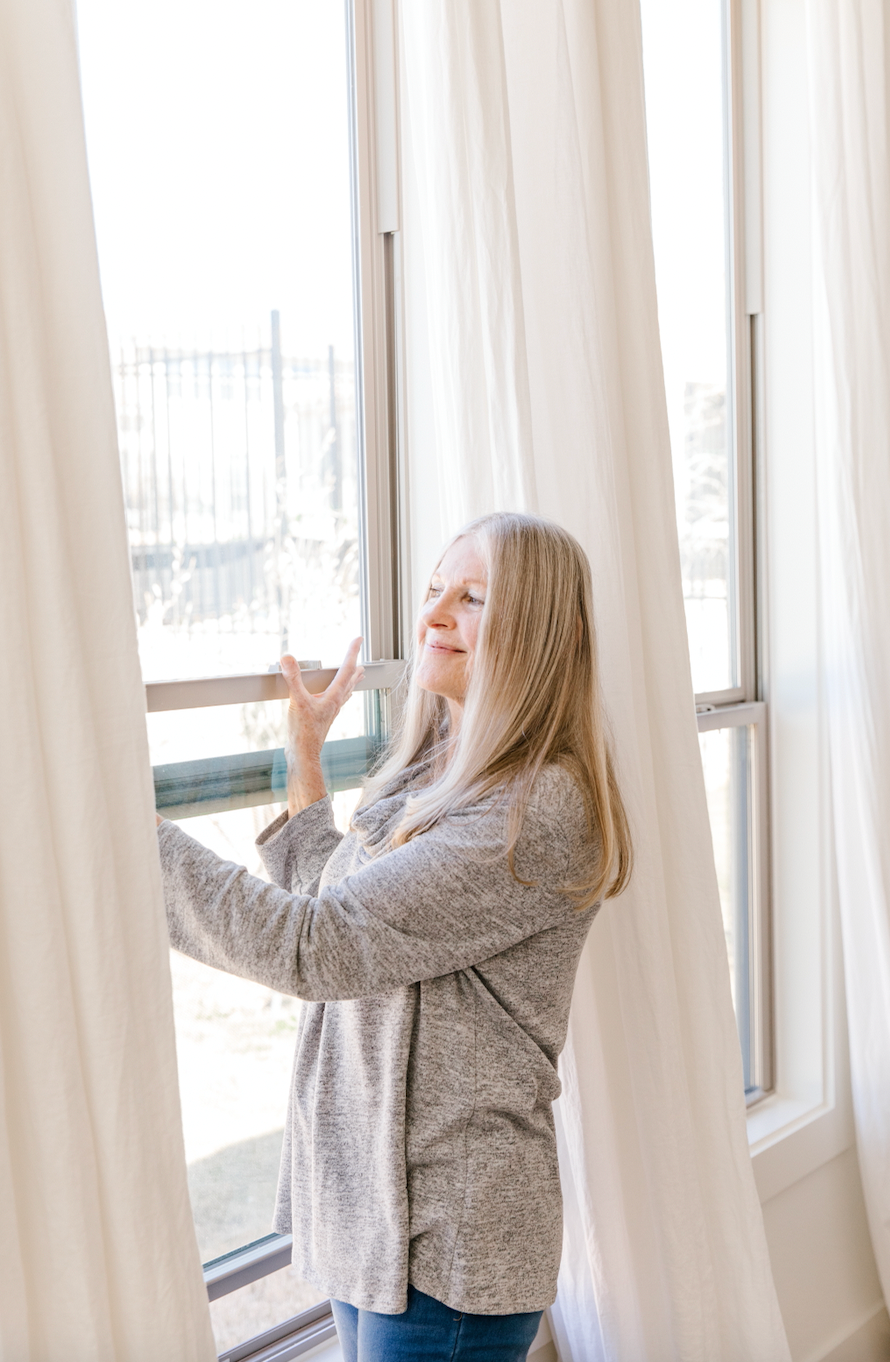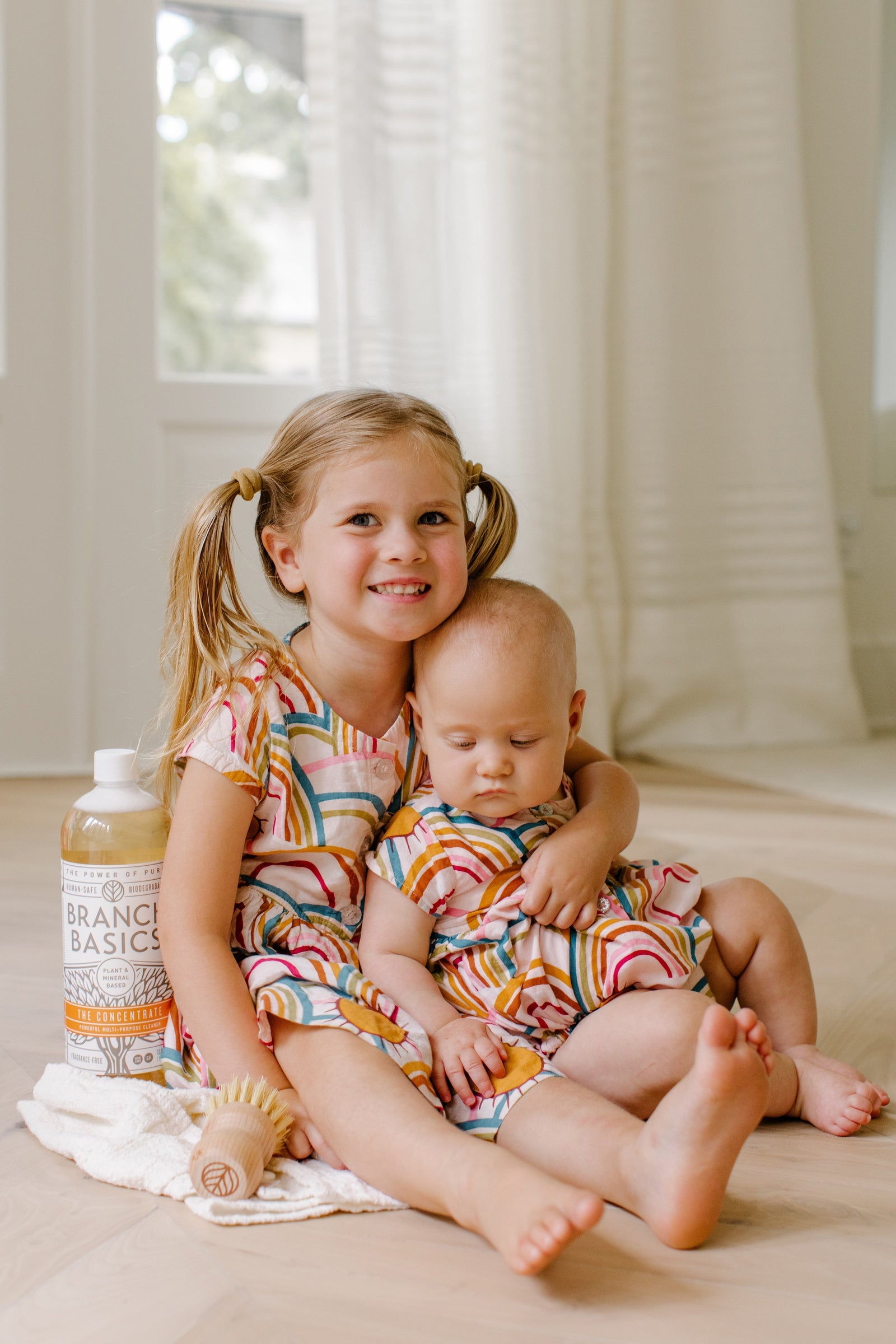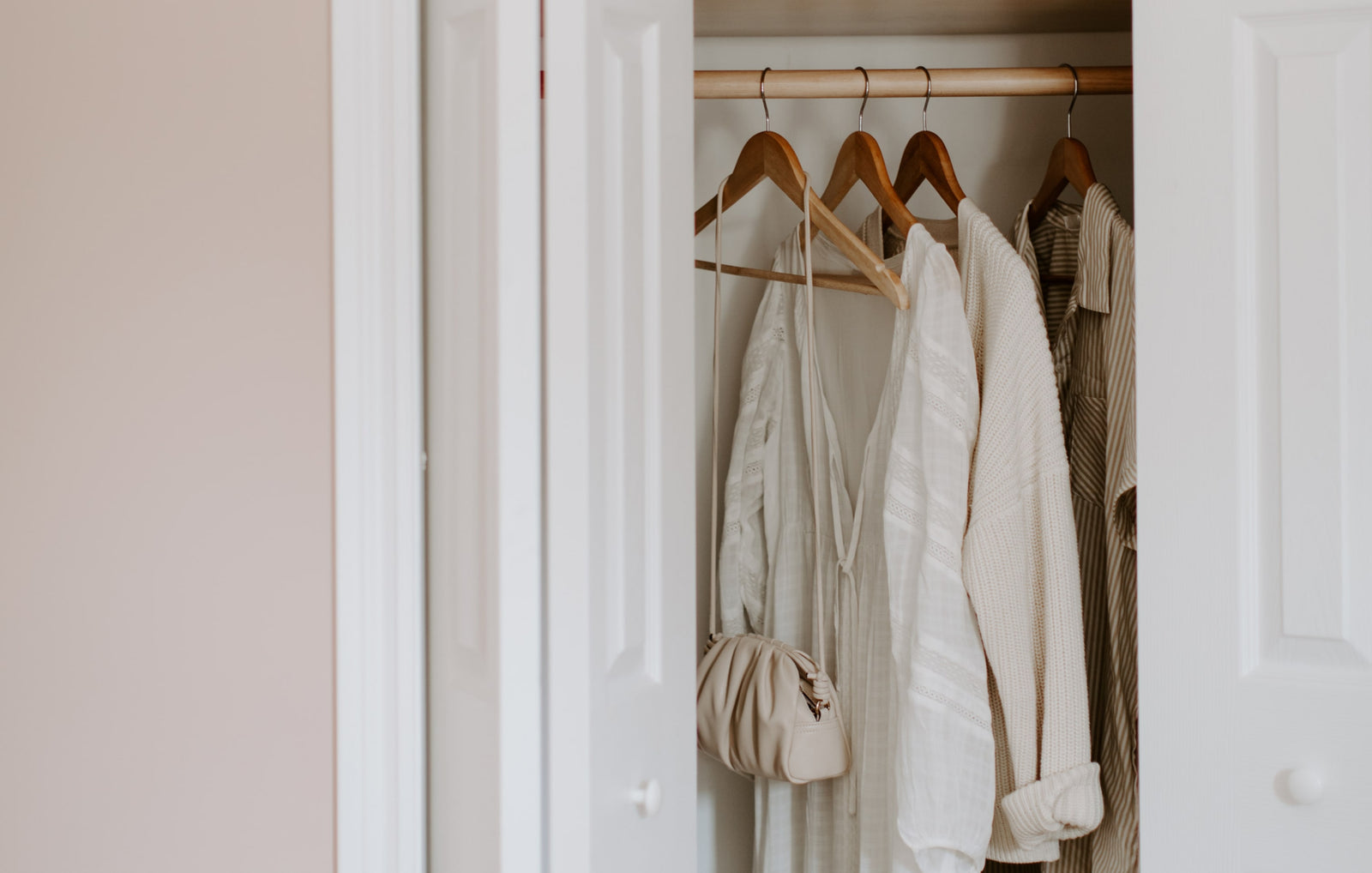How To Get Rid Of House Smells Naturally | 6 Simple Methods

Have you ever come home to a house that smells less than clean and fresh?
It happens to the best of us, especially if we’ve been away on a trip, have children or pets, or just have an active household and a full life.
Unfamiliar or unpleasant house smells can also be problematic if you’ve moved into a new home—either from off-gassing building materials or the previous owners.
In this article, we’ll share how to identify and get rid of house smells naturally, without resorting to harsh cleaners or toxic fragrances.
Identify the Source of the Smell
The first step to getting rid of unpleasant house odors is to figure out where they are and what’s causing them.
Fortunately, with a little detective work, you should be able to identify the source of the smell quickly.
Here are some places to check:
- Attics: These can be a source of moisture or pests.
- Bathrooms: In addition to odors from in or around toilets, showers, sinks, and tubs can become a source of mold or mildew.
- Basements or crawl spaces: If humidity or flooding is an issue, mold can result and create musty smells in the basement.
- Children’s bedrooms: Teens are notorious for leaving laundry or dishes to pile up.
- Closets: Lack of ventilation can create musty smells in closets.
- Couch cushions: It’s amazing how much food can wind up in couch cushions when you have children around.
- Diaper pails: These can go up in odor-volume as your child gets older or begins solids.
- Dishwasher: Stagnant water or dirty dishes can both cause unpleasant odors.
- Front-loading washers: These can put off musty smells if left closed.
- HVAC systems: Musty smells can come from HVAC systems contaminated with mold. This requires expert advice.
- Garbage cans and recycle bins: Be sure to check in, under, and around.
- Garbage disposals
- Gym bags, swim bags, and backpacks
- New furniture, electronics, accessories, or building materials like flooring: Depending on the materials, these can off-gas some pretty potent chemicals, like formaldehyde and VOCs, for several weeks or longer (which is why we recommend buying the least toxic furniture, decor, and building materials possible and/or off-gassing them before bringing them into your home).
- Related content:
- Laundry hampers
- Pantries
- Pet beds, litterboxes, etc.
- Refrigerators: Don’t forget to check crispers, which can harbor moisture and mold.
- Shoe benches
- Under sinks: Leaks can create musty smells.
Get more tips on identifying musty smells in: How To Get Rid Of Musty Smells In Your House Naturally.
1. Use Fragrance-Free Cleaners
Once you’ve identified the source of the smell, it’s time to clean it up. However, using a highly-fragranced cleaner or air freshener is not the answer!
As discussed in numerous previous articles, synthetic fragrance can made up of dozens to hundreds of undisclosed chemicals, is a top allergen, is known as “the new secondhand smoke”, and harbors a cocktail of harmful, endocrine-disrupting, asthma-inducing, headache-triggering, VOC-producing chemicals.
Plus, fragrance does nothing to absorb or eliminate the smell. It only masks it, which often makes it worse.
I can’t tell you how many people I’ve helped eliminate chronic ailments and “mystery symptoms” by removing fragrances from their homes. The effect can be profound.
For most unpleasant-smelling messes, a powerful, human-safe all-purpose cleaner that removes germs and cuts through grime is your best ally.
I use and recommend Branch Basics All-Purpose solution for cleaning surfaces, removing stains, cleaning up pet messes, garbage cans, diaper pails, dishes, and more.
It’s also a perfect first line of defense against minor mold or mildew or to remove germs before disinfecting naturally using peroxide.
All-Purpose is made with Branch Basics human-safe, biodegradable, Made Safe Certified signature Concentrate plus water.
To learn more about all the ways to use this multipurpose wonder, see: How to use Branch Basic All-Purpose: Complete Guide.
2. Improve Air Circulation
Sometimes house smells can be improved or eliminated by improving air circulation.
The best way to do this is to open windows wide and turn on fans to create a good draft.
Running an air purifier near the source of the odor or using a box fan secured to a nearby window will also help expedite the removal of the smell.
I also recommend you continue opening your windows for at least 10 minutes in the morning and evenings as a staple healthy home habit.
Related reading: How To Choose An Air Purifier For Your Home
3. Use Baking Soda for Carpet & Upholstery
Baking soda is an incredibly safe and natural odor neutralizer that can be used in so many ways, including:
- On carpets or upholstered furniture: Lightly dust on, let dwell 30 or overnight minutes, then vacuum up.
- On bedding or mattresses: Sprinkle on mattress let sit 30 minutes or overnight, then vacuum.
- In the washing machine: Add 1 cup to your wash for serious deodorizing power.
- Sprinkled into shoes: Sprinkle directly into shoes and let sit for 12-24 hours to absorb odors, shake out, and wipe with a damp cloth or launder if compatible. Alternately, make a baking soda pouch using a reusable tea bag or cheesecloth and place in the shoes to absorb odors without the mess.
- As an ingredient in natural deodorant: Get the recipe here.
- In toilets: Sprinkle around the inside of the bowl to absorb odors and act as a natural scouring agent.
- In drains: Use with vinegar as a natural drain cleaner, de-clogger, and deodorizer.
- Get the full tutorial in: Natural Drain Cleaners: 5 Safe Options For Your Home.
- In a bowl: To absorb odors in the air.
- Sprinkled on pet beds: To absorb odors before washing or in between washes.
- In fridges and freezers: Keep one box in the fridge and one in the freezer.
Learn more about the power of baking soda in: Cleaning With Baking Soda (sodium bicarbonate): 12 Surprising Uses.
4. Break Out The Cheap Vodka
Although I don’t recommend drinking it, inexpensive vodka is wonderful for neutralizing and removing various household odors, and it leaves no smell once it dries.
To use:
Combine one part of inexpensive, un-flavored vodka and three parof ts distilled water into a spray bottle and use as an air mister.
You can also spray it directly onto clothing to remove fragrance, smoke odors, food odors, etc.
I’ve also used it successfully on carpets, drapes, shoes, mattresses, pillows, pet beds, and upholstered furniture (but always do a patch test in an inconspicuous area first).
Discover more uses for vinegar in: 12 Ways To Use Vinegar In Your Home.
5. Use Vinegar
Like baking soda, vinegar is also a natural odor neutralizer and absorber.
Here’s how I recommend using it to remove common house smells naturally:
- In Laundry: Add 1 cup vinegar to washing machine during wash cycle to help deodorize clothes naturally. Bonus: it acts as a natural fabric softener.
- As a natural air freshener: Place a cup of vinegar in a decorative bowl to naturally absorb odors from the air. Note: Since vinegar can spill and sting the eyes, ensure it’s in a safe place away from children and pets.
- To eliminate cooking odors: It can be hard to get a bad smell out of the kitchen! For this, I boil one teaspoon of white vinegar in 1 cup of water to remove odors fast.
- As a spray to remove smoking odors and perfume: These odors can be particularly tough to remove. However, a simple mixture of 1 teaspoon of vinegar combined with 2 cups of water used as a spray really does the trick.
Note: Although vinegar is a natural product, it contains acetic acid, which is a lung irritant when sprayed. Do not use it around babies, young children, or anyone with chronic respiratory issues. Otherwise, use good ventilation when spraying.
6. Lean into House Plants
Like trees absorb outdoor pollutants, common house plants can absorb various indoor pollutants, such as formaldehyde and VOCs, which can create unwanted smells.
They’re also fantastic for neutralizing old house smells or building material smells, such as when you first move into a previously owned home or new home.
We discuss the details about which plants work best as natural air purifiers based on a 1989 NASA study in: Air-Purifying House Plants.
Note: House plants should be monitored frequently to ensure they don’t become a source of mold or mildew, which is usually the result of over-watering.
Freshen Your Home with Branch Basics
Although fragrance companies would have us believe differently, you do not need synthetic air fresheners or harmful fragrance chemicals to create a fresh, clean-smelling home.
Yes, odors happen, and when they do, you’re now armed with everything you need to identify and eliminate them naturally.
For more information on creating a clean, healthy, and fresh-smelling home without synthetic chemicals, check out Branch Basics starter Kits.
Our Starter Kits (available in refillable plastic or glass) come with everything you need to replace every cleaner in your home with one human-safe, Made-Safe Certified, biodegradable, naturally fragrance-free Concentrate.
We also offer:
- Oxygen Boost: A mineral-based laundry booster, soaking aid, and bleach alternative
- Dishwasher Tablets: That are free from phosphates, plastic, bleach, and other harmful ingredients
- Gel Hand Soap: A safe and nourishing hand soap free from fragrance, dyes, antibacterial chemicals, petroleum products, and more
- And other helpful accessories and tools for healthy cleaning and toxin-conscious lifestyle
Categories

Marilee Nelson
Marilee Nelson is an Environmental Toxins expert who has spent nearly 30 years advocating for the chemically-sensitive and chronically-ill. She is a Board Certified Nutritionist, Certified Bau-Biologist and Bau-Biology Inspector and specializes in Food As Medicine. She has helped thousands of families and individuals identify, heal and recover from toxic exposures and is on a mission to revolutionize the way American families view their health.








